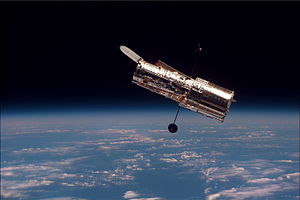
Common-sense idea of searching for city lights on the dark side of distant worlds
It’s difficult to look at the night sky and not wonder whether intelligent life exists out there. Indeed, the odds are very much in favor of there being countless civilizations scattered throughout the heavens, but the challenge remains in proving it. Recently, two scientists hit upon the novel but common-sense idea of searching for city lights on the dark side of distant worlds – a task advanced next-gen earth and space-based telescopes will likely be able to tackle in the not-too-distant future.
We’ve all seen the beautiful images of Earth’s nighttime tapestry and, indeed, science fiction abounds with the imagery of developed planets glowing at night. Still, Harvard astrophysicist Abraham Loeb and Princeton astronomer Edwin Turner hadn’t considered the possibilities lit-up alien cities might offer until they attended a meeting with their colleagues in the Middle East.
“Both Ed and I were attending a conference in Abu Dhabi about novel ways to detect life, and we had a tour guide on a trip to the nearby emirate of Dubai who bragged that it was so bright at night that you could see it easily from space — that’s what gave us the idea,” Loeb told Astrobiology Magazine .
To test their concept, Loeb and Turner made calculations based on a non-existent planet in the Kuiper Belt, a region in space that contains billions of comets and extends from about 30 to 50 astronomical units (AU). One AU is the distance from the Earth to the sun, almost 93 million miles.
They found that with existing telescopes, a city roughly the size of Tokyo, approximately 30 miles (50 km) wide, would be readily discernible on a Kuiper Belt object at about 50 AUs distant. With the powerful Hubble orbiting telescope brought to bear, that same city could be visible up to 1000 AUs away, out in the Oort Cloud (another comet-laden region) well beyond our solar system.
“The closest star is 100 times farther than that,” Loeb said, pointing out that the day side of our planet is about 600,000 times brighter than the night side. “To see nighttime city lights as bright as Earth’s on a world in the habitable zone of the closest star, you would need a telescope with optics at least 100 times wider in diameter than the Hubble Space Telescope’s.”
Read more . . .
Bookmark this page for “search for extraterrestrial life” and check back regularly as these articles update on a very frequent basis. The view is set to “news”. Try clicking on “video” and “2” for more articles.








